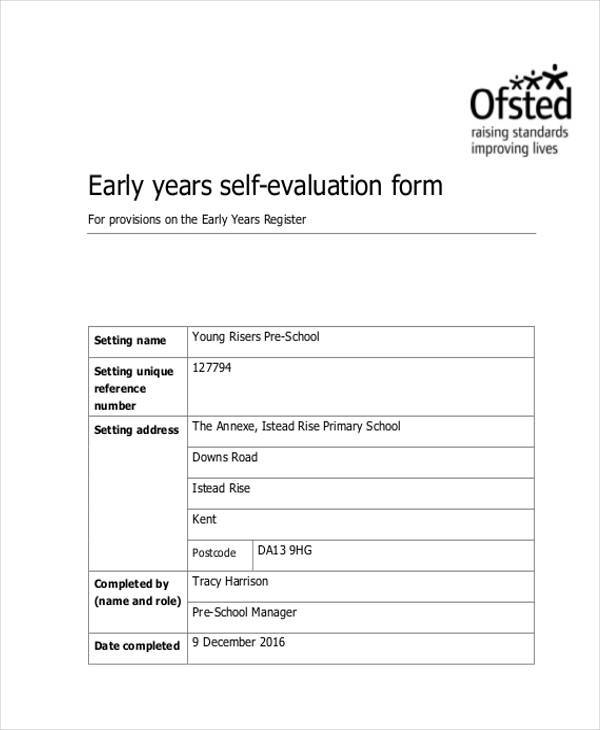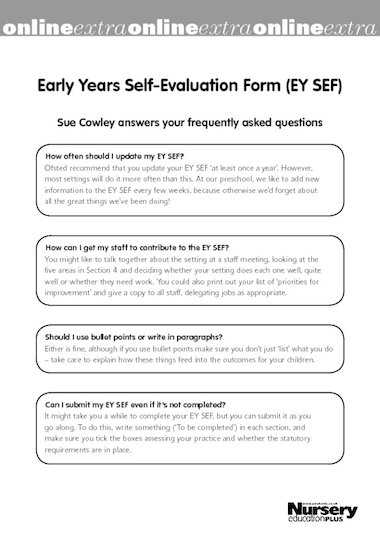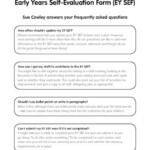Early Years Self Evaluation Form Examples – Form for employee self-evaluation It may also be useful in determining your degree of satisfaction at work as well as the direction of your company, as well as other crucial aspects.
Template for employee self-evaluationEmployees can assess their performance with respect to organizational objectives using self-assessment questionnaires. This type of assessment provides continuous growth and highlights strengths and weaknesses. The form comes with nine editable squares that can be utilized to accomplish a range of tasks.
Your employees can be happy and engaged with self-assessment questions. You will be able discern patterns and pinpoint areas that require more concentrated. You’ll be able to identify gaps in your skills and determine how you can improve your capabilities through encouraging self-evaluation.
The right questions to ask staff members are essential. Find out their preferred methods as well as their achievements and goals for the future. Depending on how you evaluate them, you could inquire about the objectives they have for their performance, as well as their professional aspirations.
This template can be used to help employees self-assess. A simple template may be enough to maintain consistency across different teams and departments. Moreover, it will free managers’ time.
Self-assessment form to assess your performance in relation to the job’s requirements and objectives. You’ll get a thorough assessment of your performance after you’ve completed it.
Your skills will be evaluated more closely if your potential is very high. Additionally, you’ll have an opportunity to assess your leadership, behavior and social abilities.
Unsatisfaction about a job, or with the way the department is run could lead to a decrease in productivity and morale. Employees who are unhappy are less likely to perform just as their coworkers are. There are a variety of ways and tools that can aid in reducing stress. One example is the “Voice of the Employee” tool, which allows employees to anonymously share their complaints.
There are several techniques to check if your group is happy. Surveys conducted by unofficial polls and regularly scheduled surveys are the most reliable methods to determine whether your employees are satisfied. By arranging a one-on-one meeting with your employee and having them write an assessment of their current situation, you can also seek the aid of an professional. If an employee is not satisfied with their current position it is recommended to establish a more transparent communication approach. A good employer will always be available to talk to their employees.
The happiness of employees is greatly influenced by their work environment. A poorly-structured team and poor supervision can result in low productivity and lower job satisfaction. The best way to avoid this is to pick the best candidates for the job you want them to do.
How to provide constructive criticism to your boss. Making sure your input is relevant is essential as well. Negative or false comments will not help.
You power enjoy to consider about delivering some promising criticism. This is a fantastic way to motivate your staff to be more efficient and create a more welcoming workplace.
Clear and simple is the best way to go. Also, you can offer feedback. Make sure you are forward-looking and not past-focused in your messages.
In addition to the obvious, it is crucial to be considerate and respectful when expressing your opinions. Negative criticisms will often be mistakenly understood. For instance, an employee might believe that you are just pointing out their shortcomings. Instead, you should focus on their positive characteristics and areas to improve.
You can give feedback in real-time that can ensure that it is effective. It will not only provide you the chance to raise questions and get clarification in the process, but assist you in determining the response of your receiver to the feedback more precisely.
You could choose to concentrate on the most noteworthy and relevant accomplishment in giving your boss feedback. You must think about what your boss stands to gain or lose from the contact in order to achieve this.


